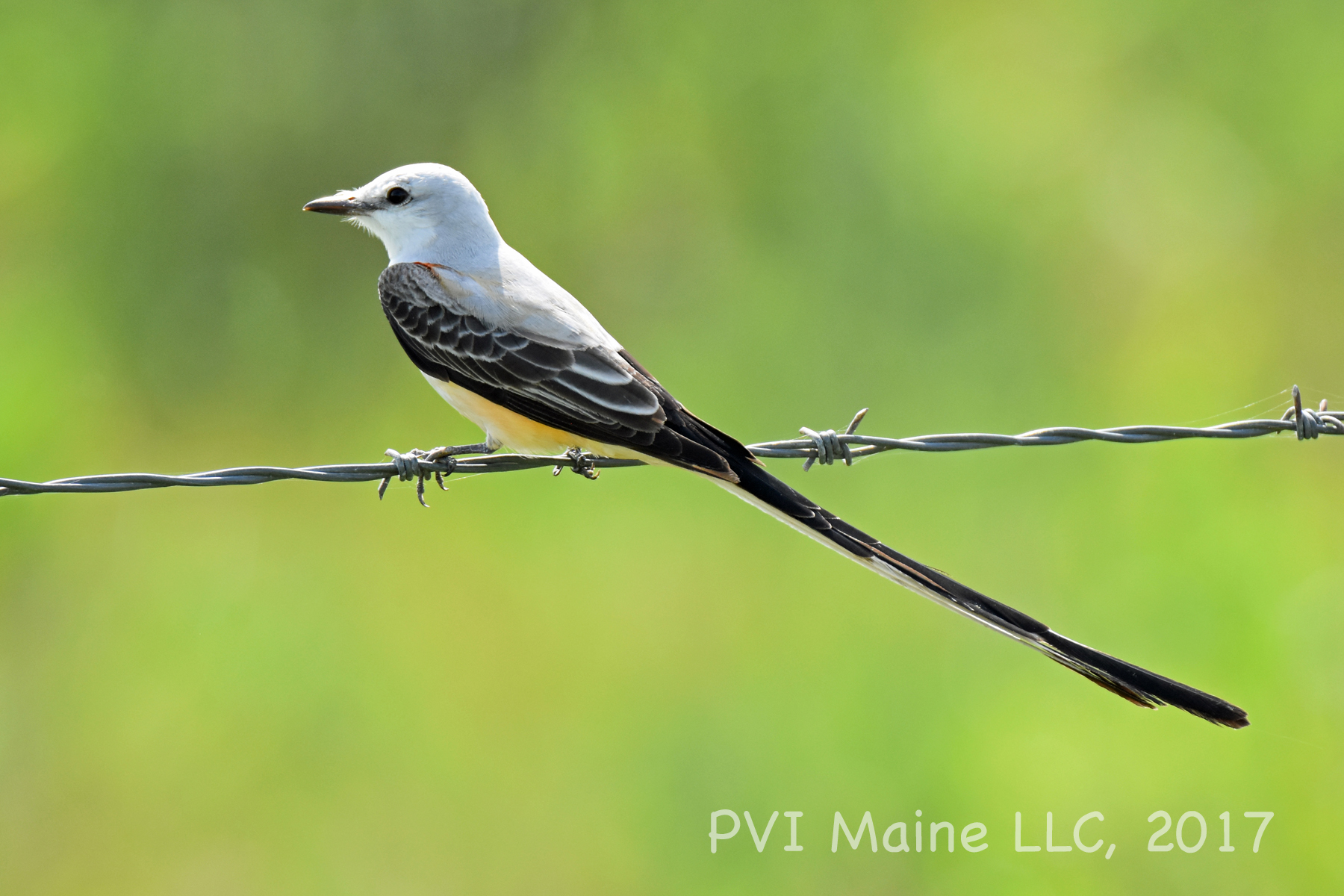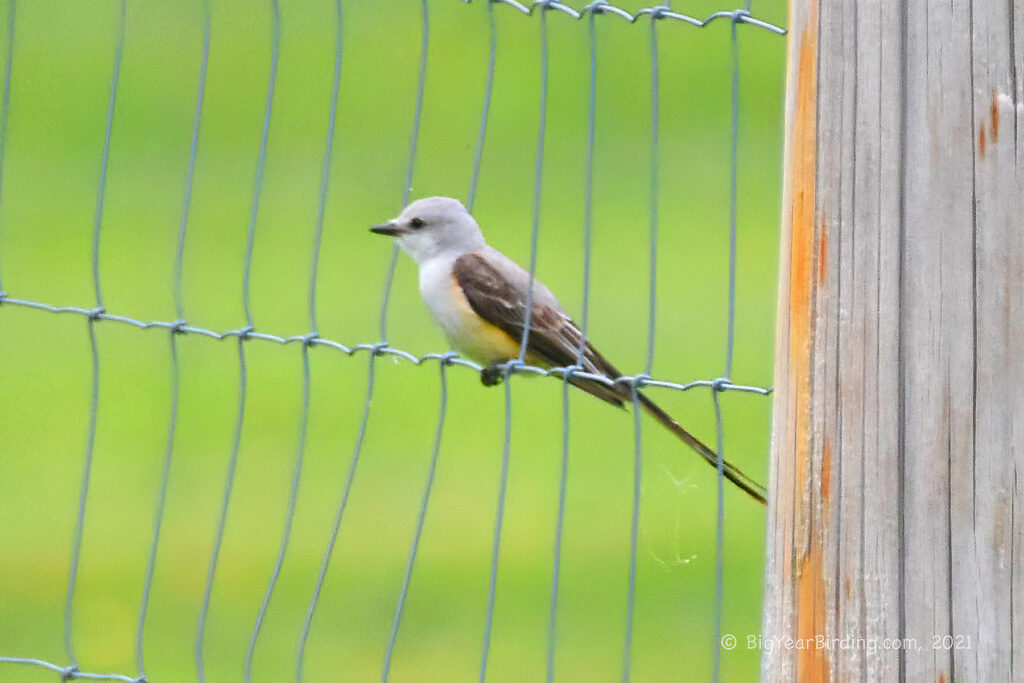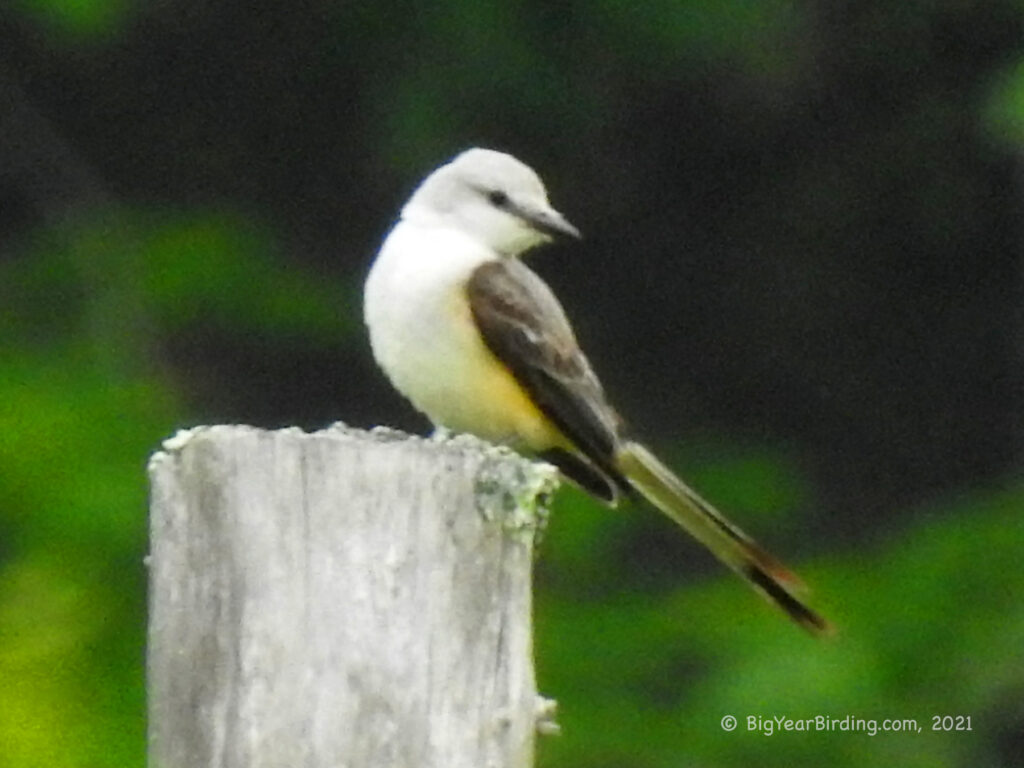
The Scissor-tailed Flycatcher (Tyrannus forficatus) is a medium-sized bird native to North and Central America. It measures approximately 14-15 inches in length, including its long, forked tail that accounts for nearly half of its overall length. Adults weigh between 1.5-2.1 ounces and have a wingspan of about 12-14 inches. The male and female Scissor-tailed Flycatcher are sexually dimorphic, with males displaying longer tail feathers and more vibrant plumage.
The Scissor-tailed Flycatcher is easily recognizable in the field due to its striking appearance. In addition to its long tail, it has a white belly, gray back and wings, and a salmon-pink wash on its flanks. The male’s head and back are a darker gray, while the female has a more muted coloration overall. Both sexes have a distinctive black “V” shape on their crown and a black bill that is relatively short and stout.
The Scissor-tailed Flycatcher is a migratory bird that spends its breeding season in the southern Great Plains of the United States, ranging from southern Nebraska and Kansas to Texas and Oklahoma. In the winter, they migrate to southern Mexico and Central America. The birds prefer open habitats such as prairies, ranchlands, and scrublands and can often be seen perched on fence posts or wires, from which they hunt for insects.
During the breeding season, male Scissor-tailed Flycatchers perform elaborate courtship displays to attract mates. They engage in aerial displays, which involve flying high into the air and performing acrobatic maneuvers while singing loudly. Once paired, the birds build a cup-shaped nest out of twigs and grass, which they typically place in a low shrub or tree. The female lays 3-6 eggs, which both parents incubate for approximately two weeks. The chicks fledge after about two weeks and are independent after another two weeks.

The Scissor-tailed Flycatcher is a beloved bird among birdwatchers and is the state bird of Oklahoma. However, their populations have declined in recent decades due to habitat loss and fragmentation, pesticide use, and climate change. Conservation efforts are underway to protect their breeding habitats and migratory routes and to raise awareness about the importance of this iconic species.

